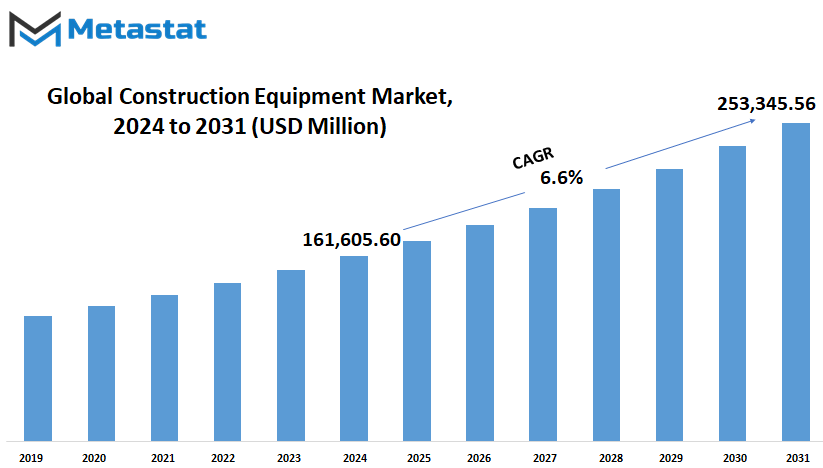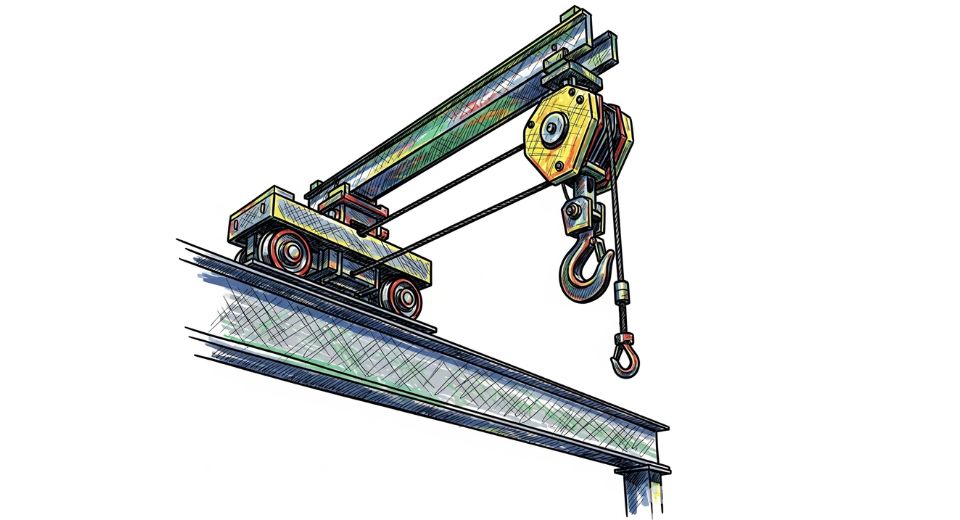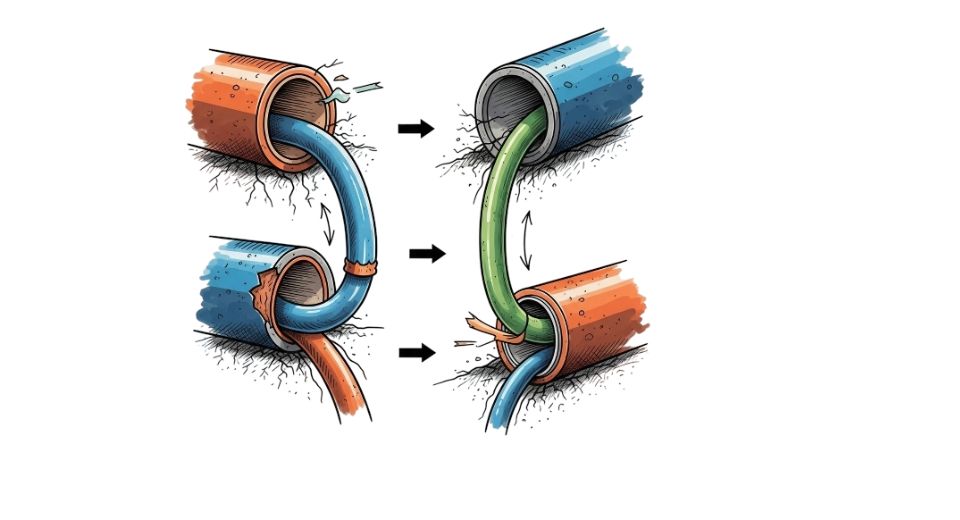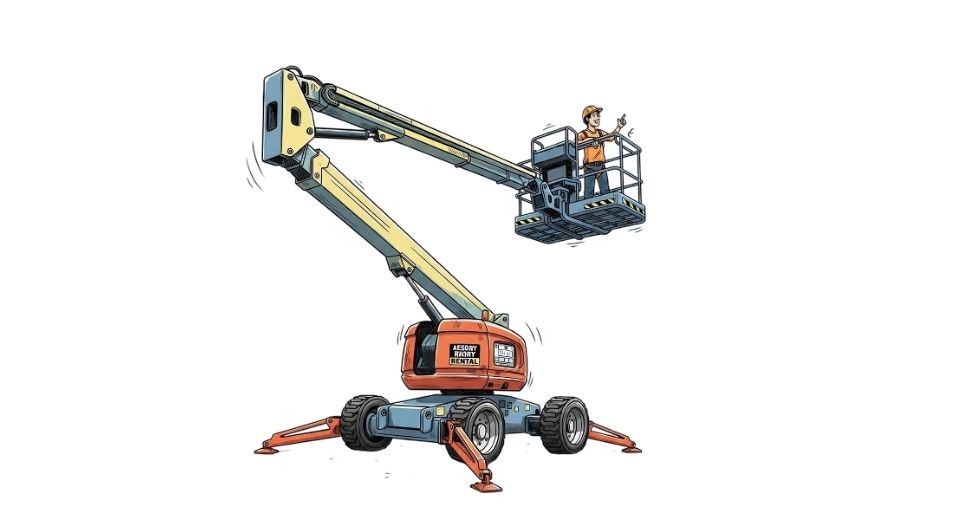MARKET OVERVIEW
The global construction equipment market is an integral part of the larger industrial machine industries. This market comprises the production, distribution, as well as sales of machinery that is used for different construction activities such as excavation, lifting, grading, and handling construction materials. In the face of rapid technological development and growing focus on infrastructure in all countries across the globe, the market for construction equipment has become a sharp barometer for monitoring the level of economic growth and overall industrial development.
The market includes many types and pieces, starting from basic hand tools to heavy complex machinery such as excavators, bulldozers, cranes, and loaders. All the machines carry out their specific functions, allowing the construction process to be more efficient but also less strenuous. Ongoing innovation in the market has enhanced operations to implement automation, GPS tracking, and telematics.
The global construction equipment market would witness unprecedented changes in the next few years. Demand in emerging economies, especially in Asia and African countries, is going to rise because they spend lavishly on construction projects like highways, bridges, airports, and urban development. Besides, developed regions are going to continue upgrading and maintaining their respective existing infrastructure, which would boost the market further.
The Global Construction Equipment market manufacturers are likely to consider the production of machinery, which do not only help in reducing costs during production but also decrease the carbon footprint of the construction activities. The drive for greener construction methods will also be an added factor since regular controls over emissions and augmented pressure on projects to have minimal carbon imprints will become stricter. Hence, electric and hybrid construction equipment are likely to be developed and accepted to reduce dependence on fossil fuel-based equipment and have cleaner construction methods.
The merging of digital technologies will further support the inflection point of the global construction equipment market. Building Information Modeling and the Internet of Things would enhance project planning, real-time monitoring, and predictive maintenance in construction equipment. Such action will improve the effectiveness of construction operations and provide longer lifespans to the machinery through swift repairs and routine maintenance.
The market structure will, of course change with the mergers, acquisitions, and strategic partnerships pursued by companies to strengthen their market presence and expand their product portfolios. The collaborations will result in the exchange of technological know-how and spur innovation across the sector as a whole. In addition, research and development will form significant areas of focus for companies looking to maintain competitive advantage and satisfy changing construction sector demands.
In terms of supply chain dynamics, even the global construction equipment market would shift towards increasing localization as risks associated with global trade uncertainties mitigate. Moreover, manufacturers will construct more resilient and flexible supply chains incorporating local suppliers, reducing dependence on international logistics.
The global construction equipment market shall see immense growth and transformation. Technological advancements, coupled with environmental considerations and infrastructural investments, will mark the course for the future trajectory of the market. With the world still moving in a process towards its perfect urbanization and development, the demand for sophisticated, efficient, and sustainable construction equipment drives this forward to be the key ingredient for the global industrial landscape.
Global construction equipment market is estimated to reach $253,345.56 Million by 2031; growing at a CAGR of 6.6% from 2024 to 2031.

GROWTH FACTORS
Several key drivers explain the gigantic growth in the global construction equipment market. The primary factor has been increased investment in infrastructure projects all over the world. Along with an upgrade in road and highway infrastructure, urban development, and constructing new buildings for residence in almost all parts of the globe, construction equipment is continually in demand. Advanced technology has led to more efficient and versatile machinery. And it contributes to the growth within the market.
The other important one is the increasing automation and digitization aspect in construction. It makes the construction processes more seamless and cost-effective with the adoption of smart technology. It has not only improved productivity but also safety standards on construction sites because of this. Another important factor acting in the wake of sustainable construction practice is being pushed forward. As the concern for the environment continues to increase, there has been a trend towards using equipment that is less carbon-emitting and supports green construction techniques. Elements that can potentially restrain the growth of the global construction equipment market include economical fluctuations and uncertainty, which would result in slowing down construction processes and hence the demand for equipment. Additionally, new, more expensive machinery can present an obstacle to smaller and medium companies engaged in construction. Another may be the strict rules regarding emissions and the safety standards followed.
The horizon still has much to look forward to, considering the obstacles. Construction equipment set to be integrated with artificial intelligence and machine learning is expected to completely change the market. These technologies will thus enhance predictive maintenance, optimize their machine performance, and cut on downtime, making the construction process more efficient. With the increasing need for developing smart cities, advanced construction equipment is also likely to be sought after.
Such a method requires equipment, hence opening new markets. In addition, the investment in employee safety and ergonomics also promotes the further development of equipment for both efficiency and safe and comfortable usage. The global construction equipment market is growing at a rapid pace due to increased infrastructures, technological advancements, and the shift towards sustainable practices. However, economic uncertainties and the regulatory hurdles do come into play, yet the ongoing emergence of AI, smart city initiatives, and modular construction methods open up promising opportunities for growth. The future will remain large and expand from these trends.
MARKET SEGMENTATION
By Product Type
One of the most volatile changes in the global construction equipment market is being driven by technological advancements and urbanization. Cities are getting larger, new infrastructure undertakings are emerging, and with this, a continuous ramping-up of demand for construction equipment continues. Hence, this trend shall be seen to increase further in the foreseeable future, and there would be great opportunities available in each of the distinct segments within the market. It is more likely that the industry would experience tremendous growth when it focuses on product types such as Earth Moving Machinery, Material Handling Machinery, and Concrete and Road Construction Machinery. Earth-moving machinery plays a very important role in the construction industry. Like excavators, bulldozers, and loaders, these machines help in preparing construction sites, digging foundations, and moving huge earth masses. As the technology advanced further, these machines were becoming not only efficient but also more friendly to the environment. Electric and hybrid earth-moving equipment was going to be more widespread, cutting the carbon footprint of construction projects and attuned to global sustainability goals.
The other significant segment of the global construction equipment market is Material Handling Machinery. It consists of cranes, forklifts, and conveyor systems. These machines are essential for lifting, transporting, and placing construction materials. Innovations in material handling equipment focus on enhanced safety, precision, and automation. For instance, advanced cranes with AI-driven control systems can improve accuracy and efficiency, which would lead to fewer accidents and more efficient construction times. Presently, in the modern urban world, concrete and road construction machinery comprise a basic and fundamental part of infrastructure development.
In this category, the equipment includes concrete mixers, pavers, and compactors. As the built-up areas continue to expand at rapid paces and demand stronger transportation infrastructure networks, more demand for these machines will be made. Future development in this field may involve developing smart construction equipment that is self-diagnosing and self-repairing, which ensures continuous operation at low maintenance costs. The future of the global construction equipment market is significant in terms of evolution and remarkable growth prospects for innovative technologies. There is an identifiable need to conquer the challenges of modern urbanization and infrastructure development, which are based on product types like Earth Moving Machinery, Material Handling Machinery, and Concrete and Road Construction Machinery. In the future, advanced technologies that will offer a leap in efficiency, safety, and sustainability for the construction process to transform the building of cities and infrastructure will define construction equipment.
By Equipment Type
Therefore, the future of the global construction equipment market seems quite optimistic, as it is backed by more technological advancement and increased focus on infrastructure development in the global scenario. The market can further be classified into two categories: heavy construction equipment and compact construction equipment. Each category fulfills various construction requirements, such as large-sized projects to small precise jobs.
Heavy construction equipment, in this regard, involves a range of heavy machinery used for constructing buildings, roads, bridges, and irrigation systems and any other complex construction site. It includes machines like bulldozers, excavators, and cranes. Huge equipment will be needed for gigantic projects like highways, bridges, and high-rise buildings. The higher the number of countries investing in infrastructure for support of urbanization and economic growth, the higher is likely to be the demand for such equipment. For instance, many developing countries today are focusing on developing modern transport networks to enhance connectivity. Huge amounts of heavy construction equipment will be in need of such projects to be completed efficiently and effectively. Acceptance of compact construction equipment, that is, mini excavators, compact loaders, and skid-steer loaders, is growing day by day due to its adaptability and efficiency in place-constrained conditions.
These machines will be of immense utility for urban construction jobs, which are always on short space. As the cities are increasing and growing, the compact equipment will play an even more crucial role. Especially handy in precise operations that demand easy maneuverability, like landscaping, repairing roads, and constructing homes, they present the types of equipment given specific purposes.

By Propulsion
The global construction equipment market the largest industry segment by any standard-is all set for drastic changes over the next few years, particularly when it comes to propulsion technologies. Today, the market is broadly categorized into three categories: Internal Combustion Engine (ICE), Electric, and CNG/LNG. Each propulsion type has different benefits and issues and, therefore, considerable importance for the future picture of the industry.
Historically, internal combustion engines have ruled the roost in the construction equipment domain. Their ruggedness and familiarity have kept ICE-based construction equipment as an integral part of earth-moving exercises around the world. However, awareness about the environment is increasing, and stricter emission norms have been enforced, so gradually, the market is shifting to less polluting alternatives.
Electric construction equipment is another emerging solution in the market. They have numerous benefits over their ICE counterparts. They emit zero emissions at the point of utilization and therefore reduce the environmental impact by a significant margin. This goes with the current trend embarked upon by most parts of the world towards sustainability and carbon footprint reduction as more construction firms aim to be environment friendly in order to meet the strong conditions required by the environment.
In addition, electric construction equipment is likely to have lower operating costs over the lifecycle. Although higher upfront costs for acquisition compared to ICE alternatives are likely to be experienced, savings in fuel and maintenance cost can eliminate such initial investments. The advance in battery technology is likely to increase range and power further, enhancing its viability in various construction applications.
The CNG/LNG propulsion segment is also experiencing momentum in tandem with the above-mentioned trend. Compared with traditional diesel engines, CNG/LNG combustion produces lesser emissions of particulate matter and nitrogen oxides, thus making them a transitional choice for construction companies who want to reduce the environmental footprint without committing to an all-electric solution.
By Engine Capacity
The divisions have been made based on engine capacity. In this, categories are covered in the global construction equipment market by: Up to 250 HP, 250-500 HP, and More than 500 HP. Thus, this segmentation helps the manufacturer and consumer to understand and cater their specific requirements for delivering certain power to the respective construction site.
With the differentiation of equipment based on engine capacity, companies can design products to meet the needs for specific projects. For instance, those equipment up to 250 HP can be availed for lighter construction jobs wherein they could bring efficiency and cost-effectiveness in the scope of tasks that do not demand great power. However, equipment falling into the 250-500 HP benchmark range reaches a nice middle road by merging the factors of power and versatility. This range can handle a higher level of workloads that could benefit construction activities in a more efficient and swifter way. On the other hand, very heavy-duty construction equipment, with outputs larger than 500 HP, is designed for hard jobs wherein peak power is required to carry out large-scale operations like road construction or mining. These machines provide the necessary strength and strength to work in demanding conditions with adequate productivity and reliability over an extended period.
The segmentation by the capacity of the engine further reveals improvement in technology and better manufacturing, from which companies evolve and improve equipment continuously. As the construction industry grows, these divisions will also mean manufacturers are able to meet changing needs in the market through provision of specific solutions towards operation-specific requirements.
|
Report Coverage |
Details |
|
Forecast Period |
2024-2031 |
|
Market Size in 2024 |
$161,605.60 million |
|
Market Size by 2031 |
$253,345.56 Million |
|
Growth Rate from 2024 to 2031 |
6.6% |
|
Base Year |
2022 |
|
Regions Covered |
North America, Europe, Asia-Pacific Green, South America, Middle East & Africa |
REGIONAL ANALYSIS
The global construction equipment market is segmented into several key regions: North America, Europe, Asia-Pacific, South America, and Middle East & Africa. Within North America, the market includes the United States, Canada, and Mexico. Europe comprises the United Kingdom, Germany, France, Italy, and the rest of Europe. Asia-Pacific covers India, China, Japan, South Korea, and the rest of the region. South America incorporates Brazil, Argentina, and the rest of South America, while the Middle East & Africa encompasses GCC Countries, Egypt, South Africa, and the remaining parts of the region.
Looking forward, the global construction equipment market would continue to see significant growth across these diverse geographical segments. North America, with robust infrastructure development projects and technological advancements, will emerge as another key market driver. Similarly, Europe would be another key driver with a focus on sustainable construction practices and, therefore, initiatives on urban redevelopment.
Asia-Pacific region rapid industrialization and urbanization trends are expected to hike the adoption rate of construction equipment in that region. Meanwhile, government investments in large-scale infrastructure projects will fuel development in areas like China and India.
Demand for construction equipment will continue to rise steadily in South America, particularly with respect to the refurbishment of infrastructure and efforts aimed at kick-starting an economic recovery. Brazil is expected to be a very significant market force in this region.
The Middle East & Africa region, with its tough construction projects and urban expansion plans, will be a key opportunity for manufacturers and suppliers of construction equipment. Countries in the region - GCC countries and South Africa to name just two - will drive demand through their infrastructure development agendas.
The overall global construction equipment market is shifting significantly in all the regions. This shift may relate to new technologies, new regulatory frameworks, economic conditions, or demographic change-what factors are going to reshape the dynamics of these markets-and the industry as a whole is going to continue evolving. The requirement for highly efficient, sustainable, and technologically advanced construction equipment solutions will force stakeholders on these lines to adapt and innovate for fulfilling the increasing demands.
COMPETITIVE PLAYERS
The global construction equipment market around the world is extremely competitive as this is operated by few key players. Some of those players include: Caterpillar, Deere & Company, Komatsu Ltd., and Volvo, among others. These companies define most of the trends in the industry and create what will actually represent benchmarks.
Caterpillar, known for its rugged equipment and innovative concepts, is without doubt one of the topmost companies in the world. It offers a diversified product portfolio to match all the different construction demands across the globe. Deere & Company also has the pride of focusing on technology with constant new product introductions that enable higher productivity and efficiency on the construction site.
Another giant is Komatsu Ltd., which takes experiences and know-how from a worldwide and all-around industry understanding to concentrate on reliable, sustainable equipment solutions. It also puts its concentration on quality and safety while it emphasizes a broad portfolio which makes it raise to strictest industry standards addressing environmental issues.
These companies compete not only on product innovation but also on service excellence and customer support. They invested heavily in researching and developing products to maintain an edge in an increasingly dynamic market environment. Advanced technologies like IoT and AI are changing the industry, making equipment smarter and more connected than ever before.
Looking ahead, the competitive dynamics in the global construction equipment market are likely to get even more intense. Generally, Asian-Pacific and Latin American economies are aggressively growing on infrastructure development. Therefore, stronger demand for sophisticated equipment solutions that also save energy will grow. The sustainability initiatives and regulations will also shape the product development strategies and may spur the companies to innovate using eco-friendly materials and energy-saving technologies.
Innovation, technological advancement, and strategic partnerships characterize the competitive landscape of this global market. Industry's continued evolution and transformation will soon be necessary as the top players expand their capacities and footprint. Adaptation and agility will be necessary for companies to succeed, given that success in this very dynamic, competitive environment is defined not only as the ability to meet more dynamic customer needs but also embracing new technologies and market trends.
Construction Equipment Market Key Segments:
By Product Type
- Earth Moving Machinery
- Material Handling Machinery
- Concrete and Road Construction Machinery
By Equipment Type
- Heavy Construction Equipment
- Compact Construction Equipment
By Propulsion
- ICE
- Electric
- CNG/LNG
By Engine Capacity
- Up to 250 HP
- 250-500 HP
- More than 500 HP
Key Global Construction Equipment Industry Players
- Caterpillar, Inc
- CNH Industrial America LLC.
- Deere & Company
- Doosan Corporation
- Escorts Limited
- Hitachi Construction Machinery Co., Ltd.
- Hyundai Construction Equipment Co., Ltd.
- J C Bamford Excavators Ltd.
- Komatsu Ltd.
- KUBOTA Corporation
- LIEBHERR
- MANITOU Group
- SANY Group
- Terex Corporation
- AB Volvo
WHAT REPORT PROVIDES
- Full in-depth analysis of the parent Industry
- Important changes in market and its dynamics
- Segmentation details of the market
- Former, on-going, and projected market analysis in terms of volume and value
- Assessment of niche industry developments
- Market share analysis
- Key strategies of major players
- Emerging segments and regional growth potential








 US: +1 3023308252
US: +1 3023308252






